The biggest challenge in this scenario for the year 2040 is a shortage of food and water as a result of the growing world population and increasing wealth. Climate change has led to extreme weather conditions that make crop yields variable and hard to predict. Packaging materials play a crucial role in protection food from food waste. Food is transported over long distances and must have a longer shelf life than before. A new generation of RFID (Radio Frequency Identification) makes it possible to monitor the quality of the primary product in real time. Packaging materials also contribute to the efficient use of food. The online economy has changed the function of packaging materials. Attracting customers and providing product information are both done online. The aesthetics of the packaging are only a factor when the customer unpacks the products they ordered.
- Library
- KIDV model ‘Five perspectives on sustainable packaging’ ®
- Policy and strategy
- Packaging strategy and business models
Packaging strategy and business models
In general, sustainable packaging is primarily about reducing the use of raw materials and saving energy.
A logical follow-up step is to stimulate recycling and use recycled materials to produce packaging materials. However, with traditional recycling methods, it is difficult to keep the quality of the recycled materials optimal so they can be recycled over and over again. A large amount of residual waste is still generated because materials cannot be separated effectively enough. That means that a high percentage of virgin raw materials is needed for the production of new packaging materials, in addition to the recycled material.
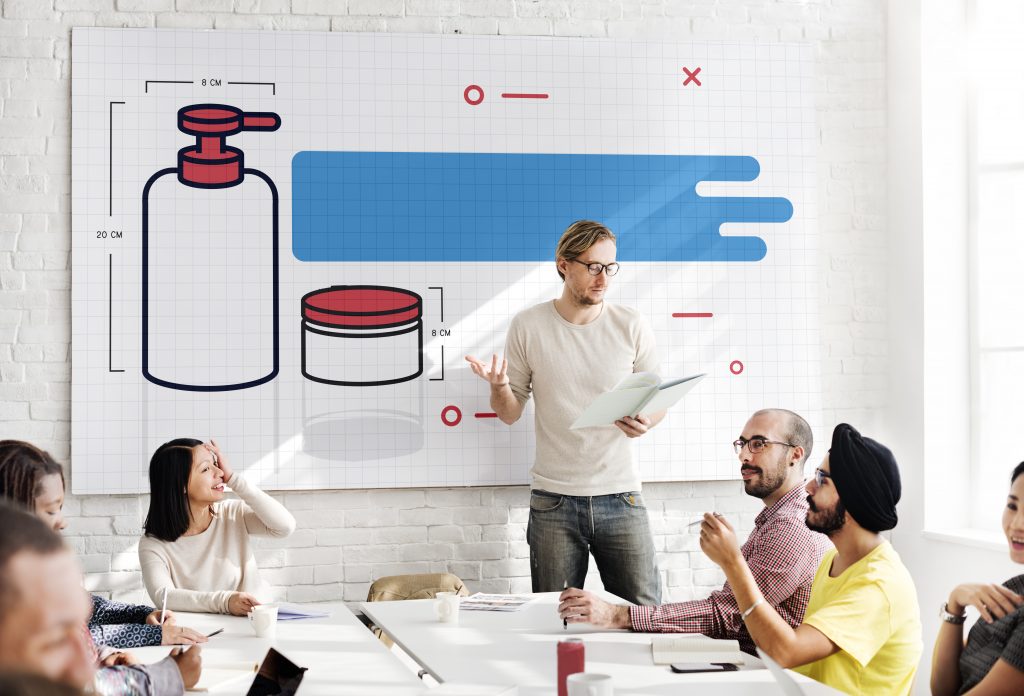
Businesses that want to create lasting value with their products or services are moving towards the implementation of circular models, in which they optimally use and reuse raw materials and minimise the environmental impact. In a circular economy, material cycles are closed as much as possible, which means that raw materials can be optimally reused or recycled and waste generation and environmental impact are reduced to a minimum.
Business that are moving towards circularity with their packaging strategy often discover that their traditional business models are insufficient to fully close circles. Realising that requires close collaboration in the material chain. Businesses must share the responsibility of closing the cycle and preserving the value of raw materials. Traditional revenue models must be updated accordingly.
Future scenarios for sustainable packaging
In 2014, the KIDV developed four future scenarios regarding sustainable packaging in the year 2040. These are examples of possible social reactions to developments and trends. The scenarios illustrate the paths that sustainable packaging can take in the future and what this means for chain parties, collaboration in the chain, and revenue models. The scenarios are not predictions, but rather intended to serve as inspiration for the exploration of possible policy directions and strategic choices and to instigate further developments.
Below, you will find a brief summary of the four scenarios and the opportunities each presents to producers and importers:
Scenario 'Going concerns'
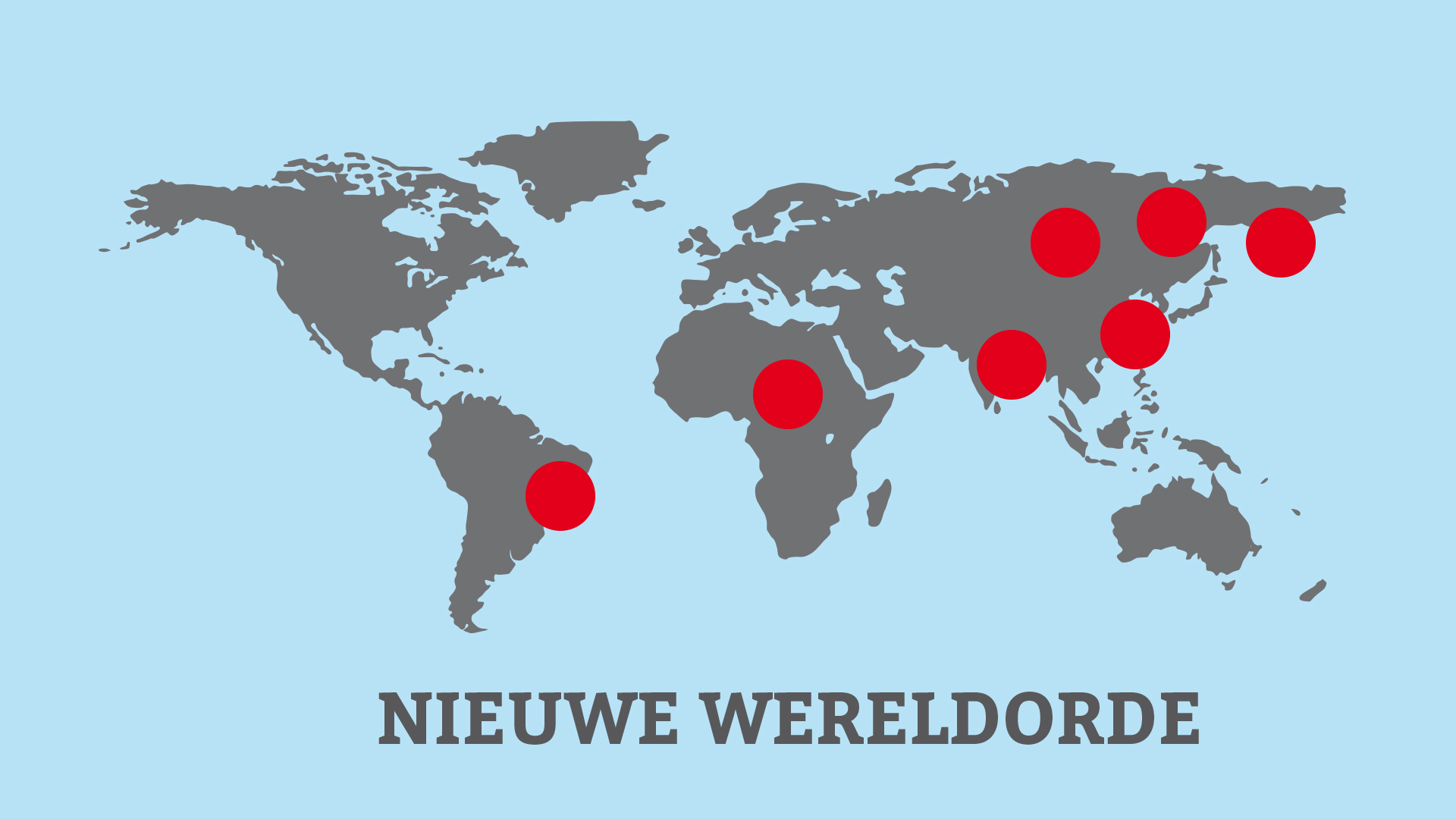
Examples of opportunities for producers and importers:
- Developing and using smart packaging materials that prevent food wastage; this can lead to the increased use of packaging materials.
- Putting the environmental impact of products, particularly food, first: the packaging is mainly designed to protect the product.
- Bulk transport of food.
- Packaging products closer to the consumer and in smaller quantities.
- Integrating the collection of packaging materials in the reverse logistics of delivery to households.
- Using standardised secondary packaging materials.
- Setting up paid collection systems for chains that are not closed in a financial sense.
- Using recycled materials for non-food packaging materials.
- Closing one’s own chain: traceability to guarantee food safety.
- Limiting transport movements and making transport more efficient, for example by using multi-modal transport by rail and water.
“Local is best” Scenario
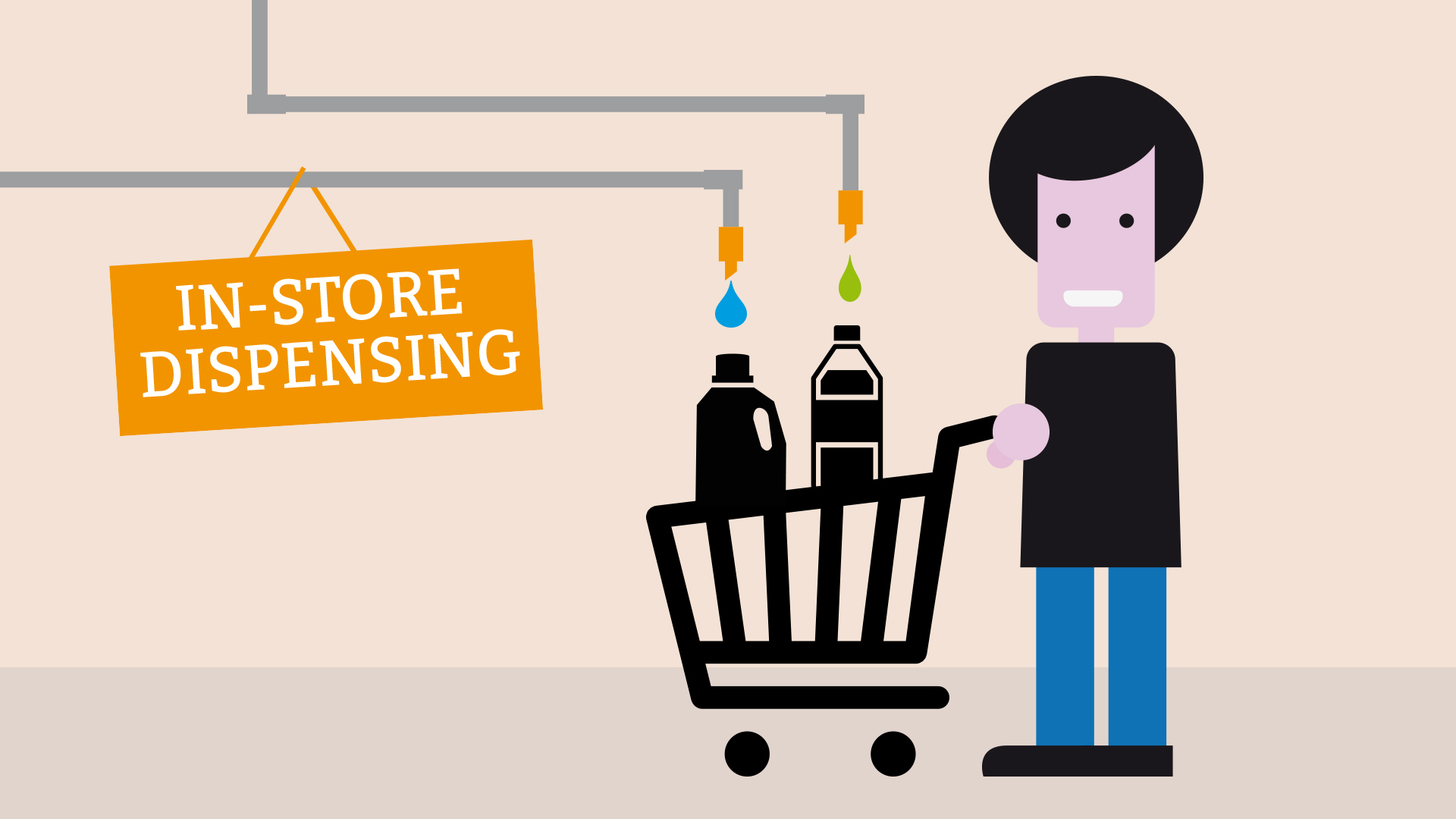
The local economy emphasises reuse. Waste is processed locally as much as possible, for example by composting it. Packaging materials are either reusable or biodegradable. Because packaging materials have a reputation of being wasteful, many producers avoid using them. Supermarkets have adopted a system of “self-dispensing,” and electronics are delivered in special cases that are then picked up by the producer. Innovation in materials is mainly directed towards using various raw materials for the production of biodegradable packaging materials. To a large extent, material usage depends on local availability, and the differences between regions are significant.
Examples of opportunities for producers and importers:
- Stimulating local production: city gardens, getting your milk directly from a farmer.
- Focussing on nutritious foods; eliminating empty calories.
- Stimulating the use of refillable and reusable packaging materials: “self-dispensing.”
- Reintroducing local trades: going to a butcher instead of buying pre-packaged meat in a supermarket and getting your milk, fruits and vegetables from neighbourhood sellers.
- Offering transparency regarding the origin and environmental impact of products and packaging materials at the consumer’s request.
- Providing local embedding for those products for which centralised production is still the most efficient option: “glocalisation.”
- Significantly reducing the amount of logistical movements.
“Fort Europe” Scenario
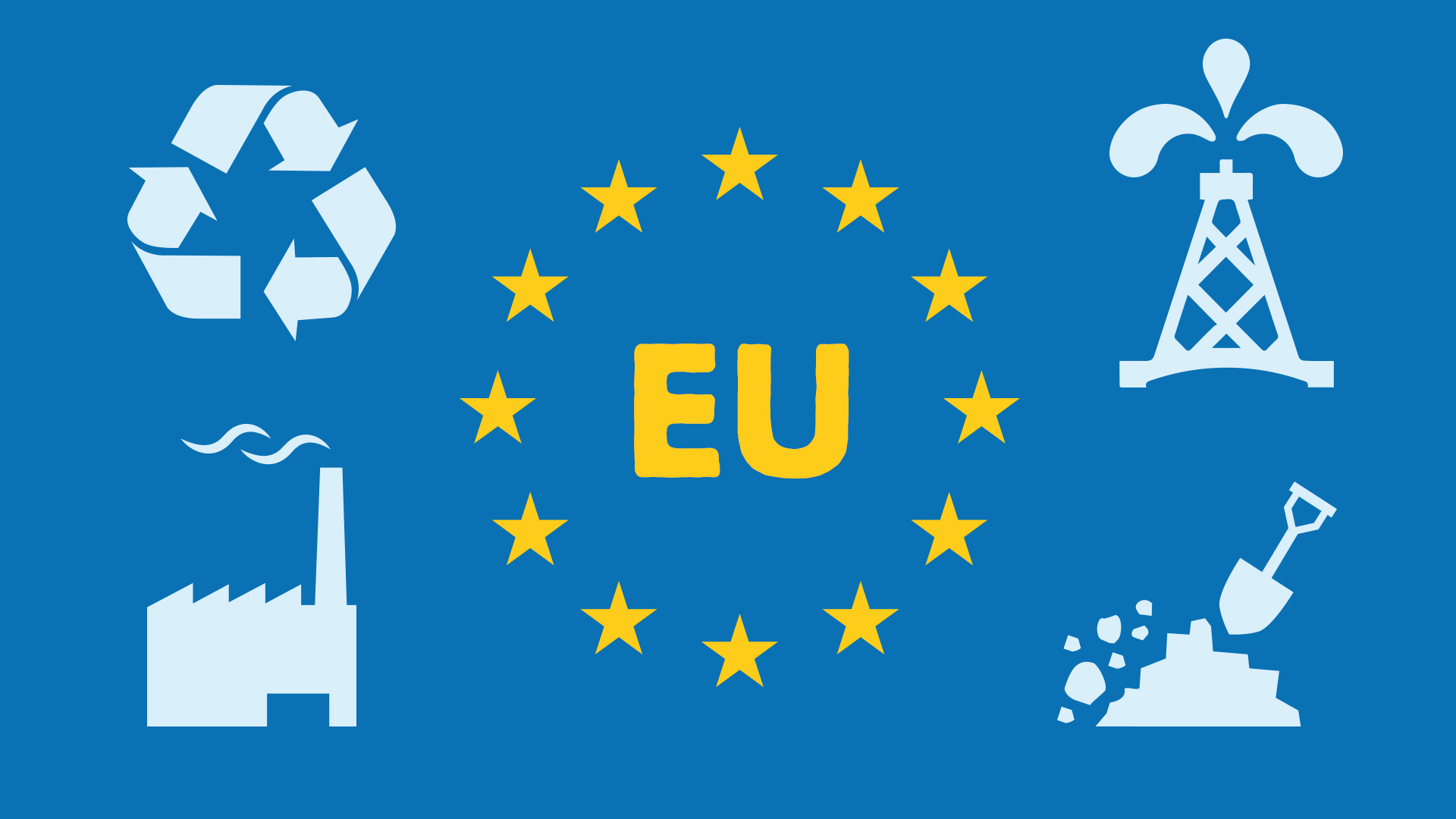
In 2040, the European circular economy has been realised. Packaging materials largely have the same function as before. However, reuse and recyclability are far more important factors during the design stage. Such designs do not always align with consumers’ experiences. Using monomaterials for the production of packaging materials is the new standard. The lease economy has significantly reduced the use of packaging materials. Because of the modular design of products, components can easily be reused. The availability of power that is nearly free makes it possible to freeze food immediately after production and keep it frozen until the moment of consumption. This has largely made the use of protective packaging materials superfluous.
Examples of opportunities for producers and importers:
- Minimising the loss of raw materials throughout the chain.
- Expanding manufacturer responsibility.
- Collaboration in European manufacturers’ organisations and the European Waste Fund.
- Minimising the use of primary raw materials.
- Extensive and high-quality use of recycled materials.
- Emphasising the recyclability of packaging materials: monomaterials and “design for recycling.”
- Making packaging materials easier to trace.
- Leasing non-food products.
- Producing plastics using biomass instead of oil.
- Developing modular products.
- Delivering concentrated ingredients in capsules to consumers to produce milk, juice, beverages, and detergents at home and prevent the unnecessary transport of “water.”
- Developing other applications for biomass (seaweed, algae).
“iCreate” Scenario
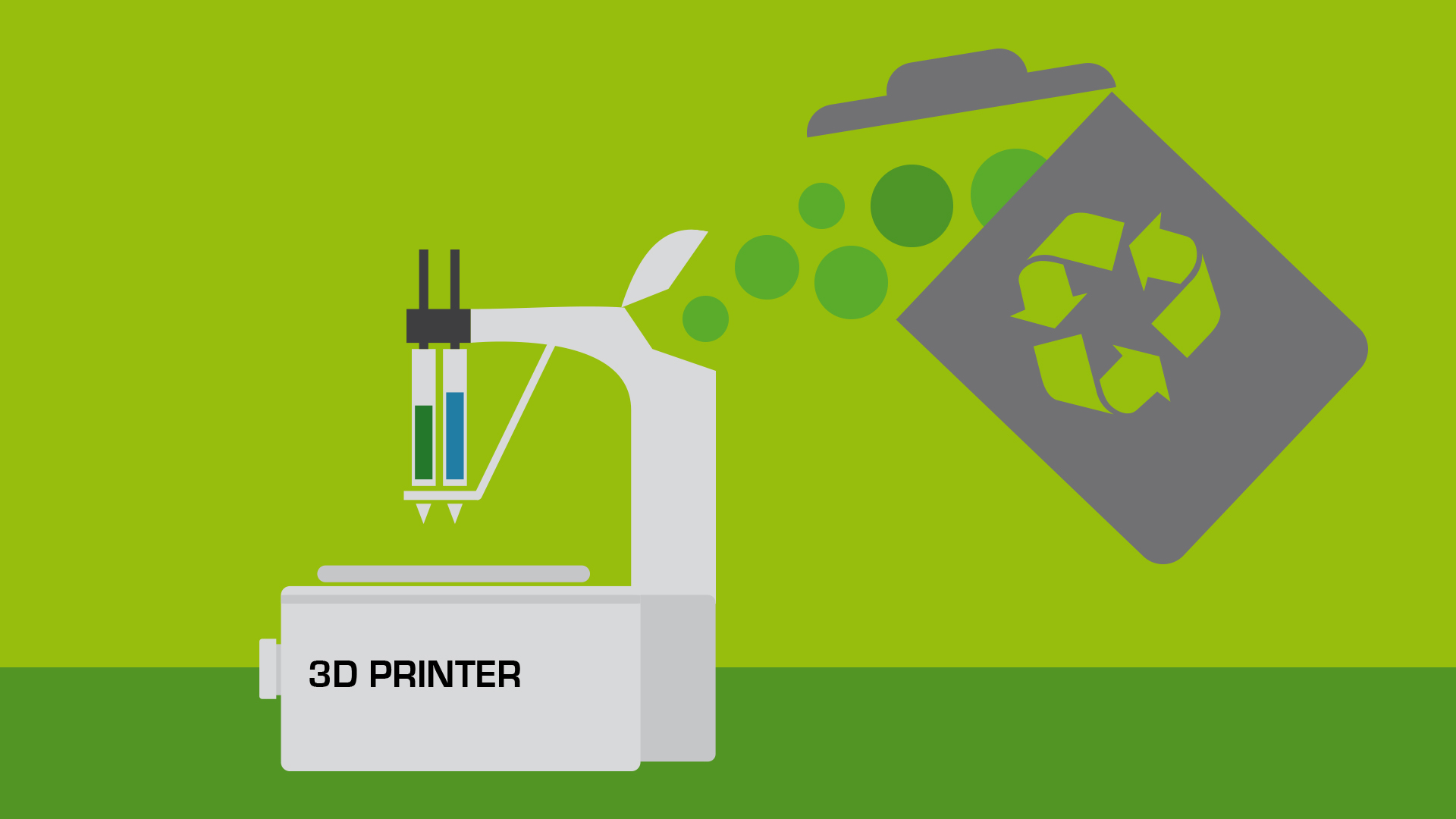
The rising popularity of the 3D printer has significantly changed production chains. Consumers have become prosumers. Production processes take place at a very small scale, either at home or locally. Transport is limited to that of raw materials for 3D printers. People either print their food or grow it themselves in climate-controlled miniature greenhouses. Technological developments have made households virtually self-sufficient. Packaging materials are hardly needed at all. In this scenario, the 3D printer is used as a metaphor for “disruptive technology,” which also includes “smart computers” and “self-driving cars.”
Examples of opportunities for producers and importers:
- Minimising the environmental impact of input material for 3D printers and its packaging.
- Stimulating the recyclability of printed products.
- Facilitating innovation for consumers; iTunes for 3D printers.
- The delivery of systems: printers and cartridges.
- Optimising logistics processes to consumers.
- Innovations: waste as a raw material for 3D printers.
- Industrial applications for 3D printing.
- Providing designs for products via 3D printing.